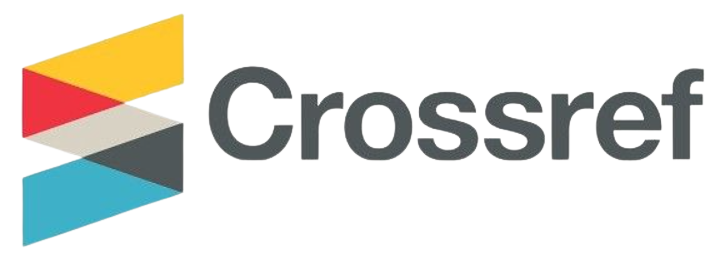Klasifikasi Ekspresi Wajah Menggunakan Covolutional Neural Network
DOI:
https://doi.org/10.25126/jtiik.2024118888Abstrak
Pengenalan ekspresi wajah adalah tantangan penting dalam pengolahan citra dan interaksi manusia-komputer karena kompleksitas dan variasi yang ada. Penelitian ini mengusulkan arsitektur sederhana Convolutional Neural Network (CNN) untuk meningkatkan efisiensi klasifikasi emosi pada dataset kecil. Dataset yang digunakan adalah Jaffe, yang terdiri dari 213 citra berukuran 256x256 piksel dalam tujuh kategori ekspresi. Citra-citra tersebut di-resize menjadi 128x128 piksel untuk mempercepat pemrosesan. Data diproses menggunakan arsitektur CNN yang terdiri dari 3 lapisan konvolusi, 2 lapisan subsampling, dan 2 lapisan dense. Kami mengevaluasi model dengan 5-fold dan 10-fold cross-validation untuk estimasi kinerja yang robust, serta teknik hold-out (70:30, 80:20, 85:15, dan 90:10) untuk perbandingan hasil yang jelas. Hasil menunjukkan akurasi tertinggi sebesar 90.6% dengan learning rate 0.001 pada pembagian 85% data latih dan 15% data uji, melebihi model yang lebih kompleks. Meskipun tidak menggunakan transfer learning atau augmentasi data, model ini tetap unggul dibandingkan pendekatan tradisional seperti Local Binary Pattern (LBP) dan Histogram Oriented Gradient (HOG). Dengan demikian, arsitektur CNN yang sederhana ini terbukti efektif untuk pengenalan ekspresi wajah pada dataset kecil.
Abstract
Facial expression recognition is a significant challenge in image processing and human-computer interaction due to its inherent complexity and variability. This study proposes a simple Convolutional Neural Network (CNN) architecture to enhance the efficiency of emotion classification on small datasets. Jaffe's dataset consists of 213 images sized 256x256 pixels across seven expression categories. These images were resized to 128x128 pixels to accelerate processing. The data was processed using a CNN architecture comprising 3 convolutional layers, 2 subsampling layers, and 2 dense layers. We evaluated the model with 5-fold- and 10-fold cross-validation for robust performance estimation and hold-out techniques (70:30, 80:20, 85:15, and 90:10) for clear result comparison. The results indicated the highest accuracy of 90.6% with a learning rate of 0.001 using the 85% training and 15% testing data split, surpassing that of more complex models. Although the model does not employ transfer learning or data augmentation, it still outperforms traditional approaches such as Local Binary Pattern (LBP) and Histogram Oriented Gradient (HOG). Thus, this simple CNN architecture proves effective for facial expression recognition on small datasets.
Downloads
Referensi
AKBAR, A. T., SAIFULLAH, S., PRAPCOYO, H., HUSAINI, R., & AKBAR, B. M. 2024. EfficientNet B0-Based RLDA for Beef and Pork Image Classification BT. Proceedings of the 2023 1st International Conference on Advanced Informatics and Intelligent Information Systems (ICAI3S 2023), 136–145. https://doi.org/10.2991/978-94-6463-366-5_13
AKBAR, M. T., ILMI, M. N., RUMAYAR, I. V., MONIAGA, J., CHEN, T.-K., & CHOWANDA, A. 2019. Enhancing Game Experience with Facial Expression Recognition as Dynamic Balancing. Procedia Computer Science, 157, 388–395. https://doi.org/10.1016/j.procs.2019.08.230
AKHAND, M. A. H., ROY, S., SIDDIQUE, N., KAMAL, M. A. S., & SHIMAMURA, T. 2021. Facial Emotion Recognition Using Transfer Learning in the Deep CNN. Electronics, 10(9), 1036. https://doi.org/10.3390/electronics10091036
ALMABDY, S., & ELREFAEI, L. 2019. Deep Convolutional Neural Network-Based Approaches for Face Recognition. Applied Sciences, 9(20), 4397. https://doi.org/10.3390/app9204397
ALMEIDA, J., VILAÇA, L., TEIXEIRA, I. N., & VIANA, P. 2021. Emotion Identification in Movies through Facial Expression Recognition. Applied Sciences, 11(15), 6827. https://doi.org/10.3390/app11156827
ALOMAR, K., AYSEL, H. I., & CAI, X. 2023. Data Augmentation in Classification and Segmentation: A Survey and New Strategies. Journal of Imaging, 9(2), 46. https://doi.org/10.3390/jimaging9020046
ALRESHIDI, A., & ULLAH, M. 2020. Facial Emotion Recognition Using Hybrid Features. Informatics, 7(1), 6. https://doi.org/10.3390/informatics7010006
ALTAMEEM, T., & ALTAMEEM, A. 2020. Facial expression recognition using human machine interaction and multi-modal visualization analysis for healthcare applications. Image and Vision Computing, 103, 104044. https://doi.org/10.1016/j.imavis.2020.104044
ALTHNIAN, A., ALSAEED, D., AL-BAITY, H., SAMHA, A., DRIS, A. BIN, ALZAKARI, N., ABOU ELWAFA, A., & KURDI, H. 2021. Impact of Dataset Size on Classification Performance: An Empirical Evaluation in the Medical Domain. Applied Sciences, 11(2), 796. https://doi.org/10.3390/app11020796
APPASAHEB BORGALLI, M. R., & SURVE, D. S. 2022. Deep learning for facial emotion recognition using custom CNN architecture. Journal of Physics: Conference Series, 2236(1), 012004. https://doi.org/10.1088/1742-6596/2236/1/012004
BACHTIAR, F. A., & WAFI, M. 2021. Komparasi Metode Klasifikasi untuk Deteksi Ekspresi Wajah Dengan Fitur Facial Landmark. Jurnal Teknologi Informasi Dan Ilmu Komputer, 8(5), 949–956. https://doi.org/10.25126/jtiik.2021834434
BUSSO, C., & JAIN, J. 2012. Advances in multimodal tracking of driver
distraction (pp. 253-270 BT-Digital Signal Processing for In-Veh). Springer.
DAVILA DELGADO, J. M., & OYEDELE, L. 2021. Deep learning with small datasets: using autoencoders to address limited datasets in construction management. Applied Soft Computing, 112, 107836. https://doi.org/10.1016/j.asoc.2021.107836
DE LA TORRE, F., & COHN, J. F. 2011. Facial Expression Analysis. Visual Analysis of Humans, 9, 377–409. https://doi.org/10.1007/978-0-85729-997-0_19
ENG, S. K., ALI, H., CHEAH, A. Y., & CHONG, Y. F. 2019. Facial expression recognition in JAFFE and KDEF Datasets using histogram of oriented gradients and support vector machine. IOP Conference Series: Materials Science and Engineering, 705(1). https://doi.org/10.1088/1757-899X/705/1/012031
JEONG, J., CHO, J. H., & LEE, J. G. 2021. Filter combination learning for CNN model compression. ICT Express, 7(1), 5–9. https://doi.org/10.1016/j.icte.2021.01.001
JIA, Y., SHELHAMER, E., DONAHUE, J., KARAYEV, S., LONG, J., GIRSHICK, R., GUADARRAMA, S., & DARRELL, T. 2014. Caffe: Convolutional Architecture for Fast Feature Embedding. Proceedings of the 22nd ACM International Conference on Multimedia, 675–678. https://doi.org/10.1145/2647868.2654889
KAHLOOT, K. M., & EKLER, P. 2021. Algorithmic Splitting: A Method for Dataset Preparation. IEEE Access, 9, 125229–125237. https://doi.org/10.1109/ACCESS.2021.3110745
KHANDAY, O. M., DADVANDIPOUR, S., & LONE, M. A. 2021. Effect of filter sizes on image classification in CNN: A case study on CFIR10 and fashion-MNIST datasets. IAES International Journal of Artificial Intelligence, 10(4), 872–878. https://doi.org/10.11591/ijai.v10.i4.pp872-878
KRITHIKA, L. B., VENKATESH, K., RATHORE, S., & HARISH KUMAR, M. 2017. Facial recognition in education system. IOP Conference Series: Materials Science and Engineering, 263(4), 042021. https://doi.org/10.1088/1757-899X/263/4/042021
LEO, M., CARCAGNÌ, P., MAZZEO, P. L., SPAGNOLO, P., CAZZATO, D., & DISTANTE, C. 2020. Analysis of Facial Information for Healthcare Applications: A Survey on Computer Vision-Based Approaches. Information, 11(3), 128. https://doi.org/10.3390/info11030128
LI, C., MA, N., & DENG, Y. 2018. Multi-Network Fusion Based on CNN for Facial Expression Recognition. Proceedings of the 2018 International Conference on Computer Science, Electronics and Communication Engineering (CSECE 2018), 80(Csece), 166–169. https://doi.org/10.2991/csece-18.2018.35
LiEW, S. S., KHALIL-HANI, M., AHMAD RADZI, S., & BAKHTERI, R. 2016. Gender classification: A convolutional neural network approach. Turkish Journal of Electrical Engineering and Computer Sciences, 24(3), 1248–1264. https://doi.org/10.3906/elk-1311-58
MARTINEZ, B., & VALSTAR, M. F. 2016. Advances, Challenges, and Opportunities in Automatic Facial Expression Recognition. In Advances in Face Detection and Facial Image Analysis (pp. 63–100). Springer International Publishing. https://doi.org/10.1007/978-3-319-25958-1_4
MATTIEV, J., SAJOVIC, J., DREVENŠEK, G., & ROGELJ, P. 2022. Assessment of Model Accuracy in Eyes Open and Closed EEG Data: Effect of Data Pre-Processing and Validation Methods. Bioengineering, 10(1), 42. https://doi.org/10.3390/bioengineering10010042
MCDUFF, D., EL KALIOUBY, R., DEMIRDJIAN, D., & PICARD, R. 2013. Predicting online media effectiveness based on smile responses gathered over the Internet. 2013 10th IEEE International Conference and Workshops on Automatic Face and Gesture Recognition (FG), 1–7. https://doi.org/10.1109/FG.2013.6553750
MEHTA, D., SIDDIQUI, M., & JAVAID, A. 2018. Facial Emotion Recognition: A Survey and Real-World User Experiences in Mixed Reality. Sensors, 18(2), 416. https://doi.org/10.3390/s18020416
NG, H.-W., NGUYEN, V. D., VONIKAKIS, V., & WINKLER, S. 2015. Deep Learning for Emotion Recognition on Small Datasets using Transfer Learning. Proceedings of the 2015 ACM on International Conference on Multimodal Interaction, 443–449. https://doi.org/10.1145/2818346.2830593
RERE, L. M. R., USNA, S., & SOEGIJANTO, D. 2019. Studi Pengenalan Ekspresi Wajah Berbasis Convolutional Neural Network. Seminar Nasional Teknologi Informasi Dan Komunikasi STI&K (SeNTIK), 3, 71–78.
SAEED, S., SHAH, A. A., EHSAN, M. K., AMIRZADA, M. R., MAHMOOD, A., & MEZGEBO, T. 2022. Automated Facial Expression Recognition Framework Using Deep Learning. Journal of Healthcare Engineering, 2022, 1–11. https://doi.org/10.1155/2022/5707930
SAIFULLAH, S., DREZEWSKI, R., YUDHANA, A., PRANOLO, A., KASWIJANTI, W., SURYOTOMO, A. P., PUTRA, S. A., KHALIDUZZAMAN, A., PRABUWONO, A. S., & JAPKOWICZ, N. 2023. Nondestructive chicken egg fertility detection using CNN-transfer learning algorithms. Jurnal Ilmiah Teknik Elektro Komputer Dan Informatika (JITEKI), 9(3), 854–871. https://doi.org/10.26555/jiteki.v9i3.26722
SHAIKHINA, T., & KHOVANOVA, N. A. 2017. Handling limited datasets with neural networks in medical applications: A small-data approach. Artificial Intelligence in Medicine, 75, 51–63. https://doi.org/10.1016/j.artmed.2016.12.003
SHAN, C., GONG, S., & MCOWAN, P. W. 2009. Facial expression recognition based on Local Binary Patterns: A comprehensive study. Image Vis. Comput., 27, 803–816.
SUBUDHIRAY, S, PALO, H. K., DAS, N., & CHANDRA, M. 2021. Comparison of Facial Emotion Recognition Using Effective Features. Ann. Rom. Soc. Cell Biol., 25(6), 5241–5252.
SUBUDHIRAY, SWAPNA, PALO, H. K., & DAS, N. 2023. K-nearest neighbor based facial emotion recognition using effective features. IAES International Journal of Artificial Intelligence (IJ-AI), 12(1), 57. https://doi.org/10.11591/ijai.v12.i1.pp57-65
SUHIRMAN, S., SAIFULLAH, S., HIDAYAT, A. T., KUSUMA, M. A., & DREZEWSKI, R. 2024. Real-time mask-wearing detection in video streams using deep convolutional neural networks for face recognition. International Journal of Electrical and Computer Engineering (IJECE), 14(1), 1005. https://doi.org/10.11591/ijece.v14i1.pp1005-1014
TANG, Y. 2013. Deep Learning using Support Vector Machines. In Eprint Arxiv.
TATAR, A., HAGHIGHI, M., & ZEINIJAHROMI, A. 2024. Experiments on image data augmentation techniques for geological rock type classification with convolutional neural networks. Journal of Rock Mechanics and Geotechnical Engineering. https://doi.org/10.1016/j.jrmge.2024.02.015
TONGUÇ, G., & OZAYDIN OZKARA, B. 2020. Automatic recognition of student emotions from facial expressions during a lecture. Computers & Education, 148(November 2019), 103797. https://doi.org/10.1016/j.compedu.2019.103797
UTAMI, N., & MUSTAKIM. 2021. Data Distribution Modelling in Supervised Learning Algorithm is for The classification of Prospective Recipient Candidate. 2021 4th International Seminar on Research of Information Technology and Intelligent Systems (ISRITI), 593–597.
https://doi.org/10.1109/ISRITI54043.2021.9702783
VABALAS, A., GOWEN, E., POLIAKOFF, E., & CASSON, A. J. 2019. Machine learning algorithm validation with a limited sample size. PLOS ONE, 14(11), e0224365. https://doi.org/10.1371/journal.pone.0224365
WAFAA SHIHAB, A., & ABDUL AMIR A., K. 2020. The Impact of Filter Size and Number of Filters on Classification Accuracy in CNN - Proceeding of the 2020
IEEE International Conference on Computer Science and Software Engineering : 16-18 April 2020, University of Duhok, Duhok, Kurdistan Region, Iraq. 88–93. https://doi.org/10.1109/CSASE48920.2020.9142089
XIE, S., & HU, H. 2017. Facial expression recognition with FRR‐CNN. Electronics Letters, 53(4), 235–237. https://doi.org/10.1049/el.2016.4328
XIE, Z., LI, J., & SHI, H. 2019. A Face Recognition Method Based on CNN. Journal of Physics: Conference Series, 1395(1). https://doi.org/10.1088/1742-6596/1395/1/012006
XU, Y., & GOODACRE, R. 2018. On Splitting Training and Validation Set: A Comparative Study of Cross-Validation, Bootstrap and Systematic Sampling for Estimating the Generalization Performance of Supervised Learning. Journal of Analysis and Testing, 2(3), 249–262. https://doi.org/10.1007/s41664-018-0068-2
ZAINORZULI, S. M., CHE ABDULLAH, S. A., ZAINOL ABIDIN, H., & AHMAT RUSLAN, F. 2022. Comparison Study on Convolution Neural Network (CNN) Techniques for Image Classification. Journal of Electrical & Electronic Systems Research, 20(APR2022), 11–17. https://doi.org/10.24191/jeesr.v20i1.002
ZAINUDIN, Z., SHAMSUDDIN, S. M., & HASAN, S. 2019. Deep learning for image processing in WEKA environment. International Journal of Advances in Soft Computing and Its Applications, 11(1), 1–21.
ZHANG, Y., & LING, C. 2018. A strategy to apply machine learning to small datasets in materials science. Npj Computational Materials, 4(1), 25. https://doi.org/10.1038/s41524-018-0081-z
Unduhan
Diterbitkan
Terbitan
Bagian
Lisensi
Hak Cipta (c) 2024 Jurnal Teknologi Informasi dan Ilmu Komputer

Artikel ini berlisensiCreative Commons Attribution-ShareAlike 4.0 International License.

Artikel ini berlisensi Creative Common Attribution-ShareAlike 4.0 International (CC BY-SA 4.0)
Penulis yang menerbitkan di jurnal ini menyetujui ketentuan berikut:
- Penulis menyimpan hak cipta dan memberikan jurnal hak penerbitan pertama naskah secara simultan dengan lisensi di bawah Creative Common Attribution-ShareAlike 4.0 International (CC BY-SA 4.0) yang mengizinkan orang lain untuk berbagi pekerjaan dengan sebuah pernyataan kepenulisan pekerjaan dan penerbitan awal di jurnal ini.
- Penulis bisa memasukkan ke dalam penyusunan kontraktual tambahan terpisah untuk distribusi non ekslusif versi kaya terbitan jurnal (contoh: mempostingnya ke repositori institusional atau menerbitkannya dalam sebuah buku), dengan pengakuan penerbitan awalnya di jurnal ini.
- Penulis diizinkan dan didorong untuk mem-posting karya mereka online (contoh: di repositori institusional atau di website mereka) sebelum dan selama proses penyerahan, karena dapat mengarahkan ke pertukaran produktif, seperti halnya sitiran yang lebih awal dan lebih hebat dari karya yang diterbitkan. (Lihat Efek Akses Terbuka).














